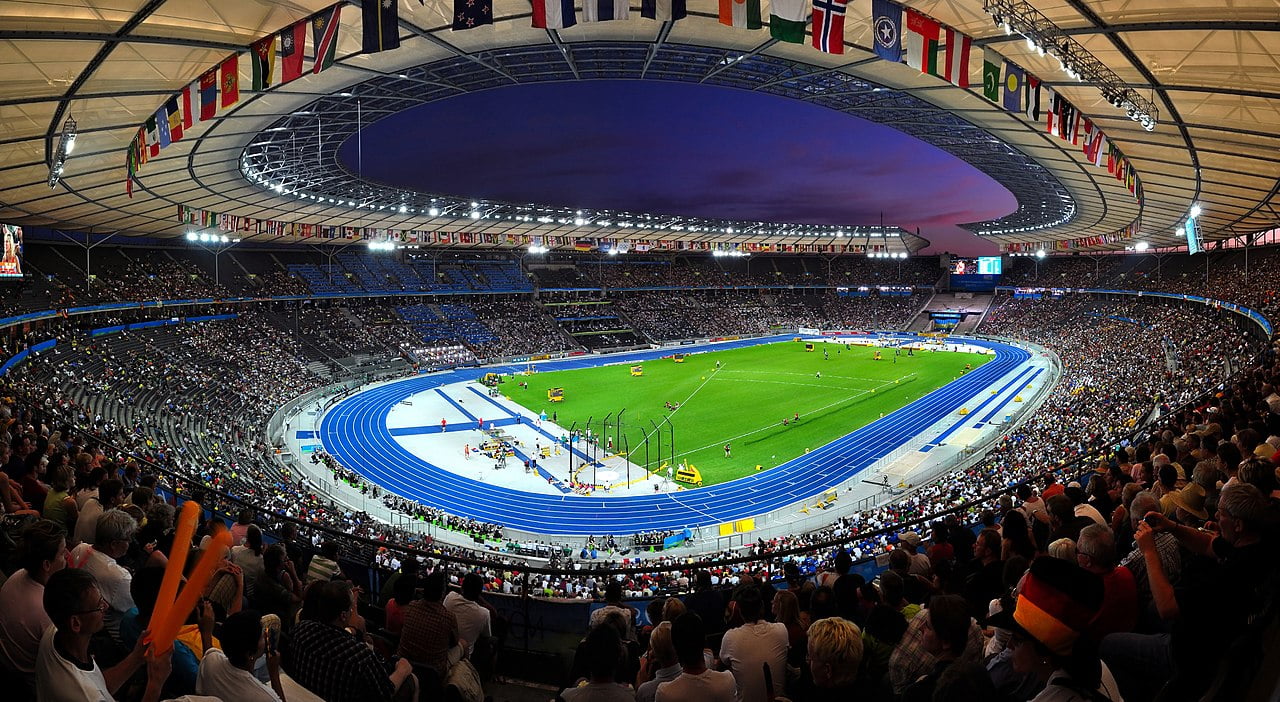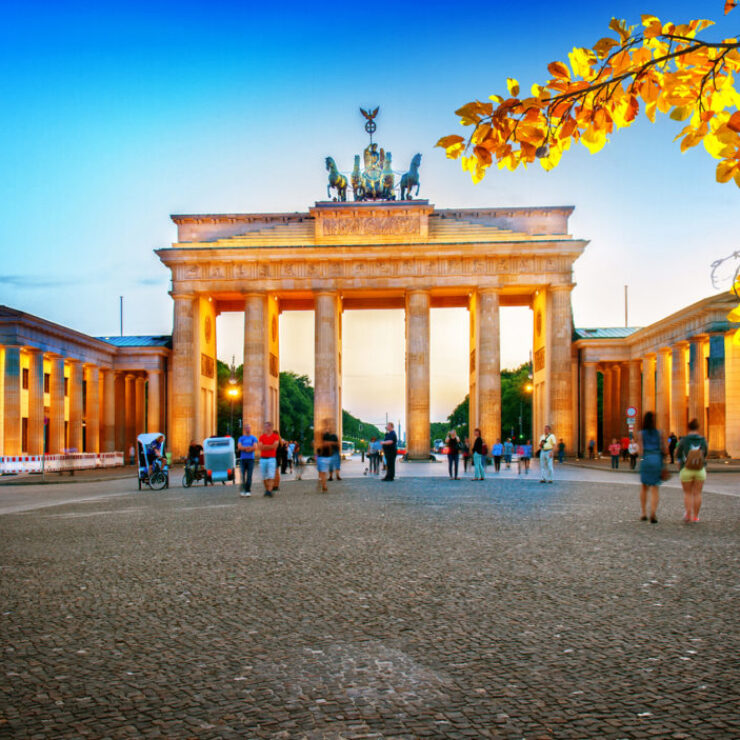The Olympiastadion in Berlin is an iconic multi-purpose stadium that has played a significant role in the city’s history and sports culture. Opened in 1936 for the Summer Olympics, the Olympiastadion has hosted a wide range of major events, from football matches and athletics competitions to concerts and cultural gatherings. With its grand architectural design and rich legacy, the Olympiastadion has become a beloved landmark and a symbol of Berlin’s vibrant sports and entertainment scene.
Key Takeaways
- The Olympiastadion in Berlin is an iconic multi-purpose stadium with a rich history dating back to the 1936 Summer Olympics.
- The stadium has hosted a diverse range of major events, including football matches, athletics competitions, concerts, and cultural gatherings.
- The Olympiastadion’s grand architectural design and legacy have made it a beloved landmark and symbol of Berlin’s sports and entertainment culture.
- The stadium’s versatility and status as a premier event venue have contributed to its significance within the city and on the global stage.
- Visitors to the Olympiastadion can immerse themselves in its rich history and vibrant atmosphere, exploring its iconic structures and facilities.
Introduction to the Olympiastadion in Berlin
The Olympiastadion in Berlin is a remarkable sports and event venue with a long and storied history. Built for the 1936 Summer Olympics, the olympiastadion in berlin is renowned for its stunning architectural design, which blends traditional and modern elements to create a truly iconic structure. Over the decades, the berlin olympic stadium has evolved to become a versatile venue, hosting a wide range of events, from world-class sporting competitions to acclaimed music concerts and cultural gatherings.
Historical Significance
The olympic stadium berlin holds a significant place in the history of Berlin, serving as a testament to the city’s resilience and its commitment to hosting major international events. The stadium’s origins can be traced back to the 1936 Summer Olympics, which were a grand and ambitious undertaking, marked by both athletic feats and political tensions.
Architectural Marvel
The berlin olympics venue is renowned for its exceptional architectural design, which seamlessly blends traditional and modern elements. The stadium’s innovative design, featuring a striking combination of neo-Baroque and Art Deco influences, has made it an iconic landmark in the city’s skyline. Iconic structures such as the towering Haupttribüne (main grandstand) and the imposing Glockenturm (bell tower) are hallmarks of the berlin olympic architecture.
Versatile Venue
Over the years, the Olympiastadion in Berlin has evolved to become a versatile venue, capable of hosting a wide range of events. In addition to its sports legacy, the stadium has also served as a premier destination for music concerts, cultural festivals, and other large-scale gatherings. This multi-purpose functionality has further cemented the Olympiastadion’s status as an iconic landmark in the heart of Berlin.
Olympiastadion in Berlin: A Glimpse into History
The Olympiastadion in Berlin has a rich history dating back to the 1930s. The stadium was originally constructed for the 1936 Summer Olympics, which were held in Berlin. The design and construction of the Olympiastadion was a massive undertaking, involving some of the most renowned architects and engineers of the time.
Origins and Construction
The berlin olympic architecture of the Olympiastadion was a testament to the engineering prowess and visionary thinking of its creators. Designed to be a centerpiece of the 1936 berlin olympics venue, the stadium’s impressive size, innovative design, and architectural grandeur made it a striking landmark in the heart of the city.
Hosting the 1936 Olympic Games
The Olympiastadion’s role as the host of the 1936 Summer Olympics was marked by both athletic feats and political tensions. Despite the controversy surrounding the games, the historic berlin stadium played a pivotal role in showcasing the world-class sporting events and captivating audiences from around the globe.
Over the decades, the Olympiastadion has continued to play a significant role in Berlin’s sports and cultural landscape, hosting numerous high-profile events and serving as a testament to the city’s enduring legacy.
Architectural Grandeur of the Berlin Olympic Stadium
The Olympiastadion in Berlin is renowned for its exceptional architectural design, which seamlessly blends traditional and modern elements. The stadium’s innovative design, featuring a striking combination of neo-Baroque and Art Deco influences, has made it an iconic landmark in the city’s skyline.
Iconic Structures
Iconic structures such as the towering Haupttribüne (main grandstand) and the imposing Glockenturm (bell tower) are hallmarks of the Olympiastadion’s architectural grandeur. These impressive features contribute to the stadium’s overall aesthetic, creating a visually stunning and architecturally significant landmark in Berlin.
Modern Renovations
Over the years, the Olympiastadion in Berlin has undergone several renovations and expansions to maintain its status as a state-of-the-art venue, while preserving its historic charm and architectural integrity. These efforts have ensured that the stadium remains a versatile and contemporary space, catering to the evolving needs of sports enthusiasts, event organizers, and visitors alike.
Olympiastadion in Berlin: A Versatile Sports Venue
The Olympiastadion in Berlin has a long and storied history as a premier sports venue. In addition to hosting the 1936 Olympic Games, the stadium has served as the home ground for several prominent football clubs and has been the stage for numerous high-profile berlin athletics stadium events.
Football Matches and Athletics Events
The Olympiastadion’s track and field facilities have made it a renowned venue for world-class competitions, showcasing the athleticism and talent of some of the greatest sportspeople. Over the years, the stadium has played host to thrilling olympic stadium berlin matches, drawing in passionate fans from across the city and beyond.
Concerts and Festivals
Beyond its sports legacy, the Olympiastadion has also emerged as a versatile event venue, hosting acclaimed music concerts, cultural festivals, and other large-scale gatherings that have further cemented its status as an iconic olympiastadion in berlin destination in Berlin. The stadium’s impressive size and state-of-the-art infrastructure have made it a sought-after location for a wide range of high-profile events, solidifying its reputation as a truly multifunctional and dynamic sports and entertainment hub.
Olympiastadion in Berlin: A Cultural Icon
The Olympiastadion in Berlin holds a profound cultural significance, serving as a symbol of the city’s rich history and resilience. Beyond its role as a sports and event venue, the historic berlin stadium has become a cherished landmark and a source of civic pride for the people of Berlin.
Symbolic Significance
The berlin olympic stadium stands as a testament to Berlin’s enduring spirit, transcending its sporting legacy to become a cultural icon. Its grand architecture, steeped in the city’s past, represents the resilience and determination of the German people, who have weathered the challenges of history and emerged stronger. Visitors to the olympiastadion in berlin can feel the weight of this symbolic significance, as they immerse themselves in the venue’s rich tapestry of history and tradition.
Attractions and Visitor Experience
Visitors to the berlin olympic stadium can explore its iconic structures, learn about its storied past, and immerse themselves in the vibrant atmosphere that permeates the venue. From guided tours that delve into the olympiastadion in berlin‘s architectural and historical nuances to interactive exhibits that bring its legacy to life, the Olympiastadion offers a multifaceted experience that celebrates its cultural and historical importance within the fabric of Berlin.
| Attraction | Description |
|---|---|
| Guided Tours | Explore the historic berlin stadium‘s architectural marvels and uncover its captivating history with the help of knowledgeable guides. |
| Interactive Exhibits | Immerse yourself in the rich legacy of the berlin olympic stadium through engaging multimedia displays and hands-on experiences. |
| Architectural Highlights | Marvel at the olympiastadion in berlin‘s iconic structures, such as the towering Haupttribüne (main grandstand) and the imposing Glockenturm (bell tower). |
Exploring the Surrounding Area
The Olympiastadion in Berlin is situated within the larger Olympic Park, a sprawling recreational area that offers a wealth of attractions and experiences for visitors. The Olympic Park itself is a testament to the city’s rich sports heritage, featuring numerous facilities and landmarks that echo the legacy of the 1936 Summer Games.
Olympic Park
Beyond the Olympiastadion, the park is home to other iconic structures, such as the Glockenturm (bell tower), the Maifeld (parade ground), and the Waldbühne (open-air amphitheater). Exploring the surrounding berlin olympics venue allows visitors to gain a deeper understanding of the olympiastadion in berlin‘s place within the broader context of Berlin’s sports and cultural landscape.
Other Landmarks
The historic berlin stadium is surrounded by a wealth of other landmarks and attractions that showcase the city’s rich history and vibrant culture. Visitors can venture beyond the Olympiastadion to discover the nearby Reichstag Building, the Brandenburg Gate, and the East Side Gallery, all of which offer a deeper understanding of Berlin’s past and its transformation into a modern, cosmopolitan destination.
Olympiastadion in Berlin: Hosting Major Events
The Olympiastadion in Berlin has a long and prestigious history of hosting major sporting events, cementing its status as one of the world’s premier sports venues. The stadium has been the stage for several FIFA World Cup matches, including the 2006 World Cup final, showcasing the highest level of international football.
UEFA Champions League Final
Additionally, the Olympiastadion has played host to numerous UEFA Champions League finals, where the continent’s top club teams have competed for the prestigious title. These high-profile events have brought the world’s attention to the Olympiastadion, solidifying its reputation as a world-class sports destination.
Athletics Championships
Beyond football, the Olympiastadion in Berlin has also been the venue for prestigious athletics championships, such as the European Athletics Championships. The stadium’s world-class track and field facilities have provided the stage for some of the most thrilling and competitive events in the world of sports, further cementing the Olympiastadion’s legacy as a truly iconic and versatile sports venue.
| Major Events Hosted at Olympiastadion in Berlin | Year |
|---|---|
| 2006 FIFA World Cup Final | 2006 |
| UEFA Champions League Final | 2015, 2022 |
| European Athletics Championships | 1936, 2018 |
Olympiastadion in Berlin: A Green Initiative
The Olympiastadion in Berlin has embraced a commitment to sustainability and environmental responsibility, setting an example for other major sports and event venues. The stadium’s management has implemented various sustainable practices to reduce its carbon footprint and contribute to the city’s broader environmental goals.
Sustainable Practices
The Olympiastadion in Berlin has made significant strides in implementing sustainable practices. This includes the use of renewable energy sources, such as solar panels and wind turbines, to power the stadium’s operations. Additionally, the venue has implemented water conservation measures, including the installation of low-flow fixtures and the use of reclaimed water for irrigation and other non-potable purposes.
Environmental Efforts
Beyond its sustainable infrastructure, the Olympiastadion in Berlin has also taken steps to enhance its environmental stewardship. The stadium’s architectural design and landscaping elements, such as the integration of green spaces and the preservation of historic trees, showcase the venue’s dedication to environmental responsibility. These efforts not only contribute to the Olympiastadion’s aesthetic appeal but also help to create a more eco-friendly and resilient urban environment.
By embracing these sustainable and environmental initiatives, the Olympiastadion in Berlin has positioned itself as a model for other sports and event venues, demonstrating how iconic landmarks can embrace green practices and contribute to a more sustainable future.
Accessibility and Visitor Information
The olympiastadion in berlin is designed to be accessible and welcoming to visitors from all over the world. The berlin olympic stadium is well-connected to the city’s public transportation network, with nearby S-Bahn and U-Bahn stations providing easy access. For those driving, the olympic stadium berlin offers ample parking facilities.
Getting to the Olympiastadion
Navigating to the olympiastadion in berlin is a breeze, thanks to the stadium’s strategic location and excellent public transit connections. Visitors can easily reach the berlin olympic stadium via the nearby S-Bahn and U-Bahn stations, allowing them to conveniently access the venue from various parts of the city. For those opting to drive, the olympiastadion in berlin provides ample parking spaces to accommodate visitors.
Ticketing and Tours
Visitors to the olympiastadion in berlin can purchase tickets for a wide range of events and activities, including sports matches, concerts, and guided tours. These tours offer an in-depth exploration of the stadium’s rich history, stunning architecture, and behind-the-scenes experiences, providing guests with a truly immersive and engaging experience. The olympiastadion’s visitor information services and accessibility features ensure that all guests can fully immerse themselves in the venue’s vibrant atmosphere and storied legacy.
| Event Type | Ticket Options | Tour Experiences |
|---|---|---|
| Sports Matches | General admission, reserved seating | Stadium tour, locker room access |
| Concerts | General admission, VIP packages | Backstage tour, meet-and-greet opportunities |
| Special Events | Early bird discounts, group packages | Themed guided tours, exclusive experiences |
Olympiastadion in Berlin: Future Plans and Developments
As an iconic and historic venue, the Olympiastadion in Berlin continues to evolve and adapt to the changing needs and expectations of its visitors and the wider community. The stadium’s management is continuously exploring ways to enhance the visitor experience, improve sustainability, and ensure the long-term viability of the Olympiastadion as a premier sports and event destination.
This includes ongoing renovations, infrastructure upgrades, and the implementation of new technologies and sustainable practices. By embracing a forward-thinking approach, the Olympiastadion in Berlin aims to preserve its rich heritage while positioning itself as a modern, environmentally conscious, and highly accessible venue that can continue to host world-class events and serve as a beloved landmark for generations to come.
| Planned Upgrades | Sustainability Initiatives | Accessibility Enhancements |
|---|---|---|
| Renovations to the iconic Glockenturm (bell tower) | Increased use of renewable energy sources | Improved public transportation connectivity |
| Infrastructure upgrades to support large-scale events | Water conservation and waste management initiatives | Expanded accessibility features for visitors with disabilities |
| Implementation of advanced technology for enhanced fan experience | Expansion of green spaces and sustainable landscaping | Optimized parking and mobility solutions |
By embracing these forward-looking plans and developments, the Olympiastadion in Berlin aims to solidify its position as a modern, sustainable, and accessible sports and cultural landmark that continues to captivate visitors from around the world.
Olympiastadion in Berlin: Iconic Sports and Event Venue
Highlights and Accolades
The Olympiastadion in Berlin has earned a reputation as one of the world’s most iconic sports and event venues. Over the decades, this remarkable stadium has hosted a multitude of historic and celebrated events, from the renowned 1936 Summer Olympics to prestigious football matches, thrilling athletics championships, and acclaimed music concerts. The stadium’s architectural grandeur, versatility, and significance as a cultural landmark have earned it numerous accolades and recognition, solidifying its status as a true gem in the heart of Berlin.
Legacy and Impact
The legacy of the Olympiastadion in Berlin extends far beyond its physical presence, serving as a symbol of the city’s resilience, sports heritage, and commitment to hosting world-class events. As a cherished landmark, the stadium has become an integral part of Berlin’s cultural fabric, captivating visitors from around the globe with its rich history, stunning architecture, and vibrant atmosphere. As the Olympiastadion continues to evolve and adapt to the needs of the modern era, it remains a beloved destination that showcases the enduring spirit and pride of the city and its people.
Through its decades of hosting iconic events and serving as a centerpiece of Berlin’s sports and cultural landscape, the Olympiastadion has left an indelible mark on the city and the world. Its legacy as an iconic sports and event venue is a testament to the power of sports to bring people together, celebrate achievements, and create lasting memories that transcend time and place.
FAQ
What is the Olympiastadion in Berlin?
The Olympiastadion in Berlin is an iconic multi-purpose stadium that has played a significant role in the city’s history and sports culture. Opened in 1936 for the Summer Olympics, the stadium has hosted a wide range of major events, from football matches and athletics competitions to concerts and cultural gatherings.
What is the historical significance of the Olympiastadion?
The Olympiastadion in Berlin has a rich history dating back to the 1930s. The stadium was originally constructed for the 1936 Summer Olympics, which were held in Berlin. The design and construction of the Olympiastadion was a massive undertaking, involving some of the most renowned architects and engineers of the time.
What are the architectural features of the Olympiastadion?
The Olympiastadion in Berlin is renowned for its exceptional architectural design, which seamlessly blends traditional and modern elements. The stadium’s innovative design, featuring a striking combination of neo-Baroque and Art Deco influences, has made it an iconic landmark in the city’s skyline. Iconic structures such as the towering Haupttribüne (main grandstand) and the imposing Glockenturm (bell tower) are hallmarks of the Olympiastadion’s architectural grandeur.
What types of events has the Olympiastadion hosted?
The Olympiastadion in Berlin has a long and prestigious history of hosting major sporting events, cementing its status as one of the world’s premier sports venues. The stadium has been the stage for several FIFA World Cup matches, including the 2006 World Cup final, as well as numerous UEFA Champions League finals. Beyond football, the Olympiastadion has also been the venue for prestigious athletics championships, such as the European Athletics Championships.
How is the Olympiastadion addressing sustainability and environmental concerns?
The Olympiastadion in Berlin has embraced a commitment to sustainability and environmental responsibility, setting an example for other major sports and event venues. The stadium’s management has implemented various sustainable practices, including the use of renewable energy sources, water conservation measures, and waste management initiatives. These efforts have helped to reduce the Olympiastadion’s carbon footprint and contribute to the city’s broader environmental goals.
How can visitors access and explore the Olympiastadion?
The Olympiastadion in Berlin is designed to be accessible and welcoming to visitors from all over the world. The stadium is well-connected to the city’s public transportation network, with nearby S-Bahn and U-Bahn stations providing easy access. Visitors can purchase tickets for various events and activities, ranging from sports matches and concerts to guided tours that provide an in-depth exploration of the stadium’s history, architecture, and behind-the-scenes experiences.
Transfer from IntercityHotel Berlin Hauptbahnhof to Olympiastadion
To transfer from IntercityHotel Berlin Hauptbahnhof to Olympiastadion, you have several options:
- Train: The S-Bahn Berlin operates a train from Berlin Hauptbahnhof to S Olympiastadion every 15 minutes. The journey takes approximately 19 minutes and tickets cost between $3–4.
- Taxi: You can take a taxi from IntercityHotel Berlin Hauptbahnhof to Olympiastadion. The trip is about 6.2 miles and should take around 14 minutes. The cost is estimated to be between $25–31.
- Drive: If you have access to a car, you can drive from IntercityHotel Berlin Hauptbahnhof to Olympiastadion. It’s a 6.2-mile drive and should take about 14 minutes, with an estimated cost of $2–3 for fuel.
These options provide flexibility depending on your schedule and preferences. The train is a convenient and eco-friendly choice, while a taxi or driving might be more suitable if you’re traveling with luggage or in a group. Enjoy your visit to the Olympiastadion!






